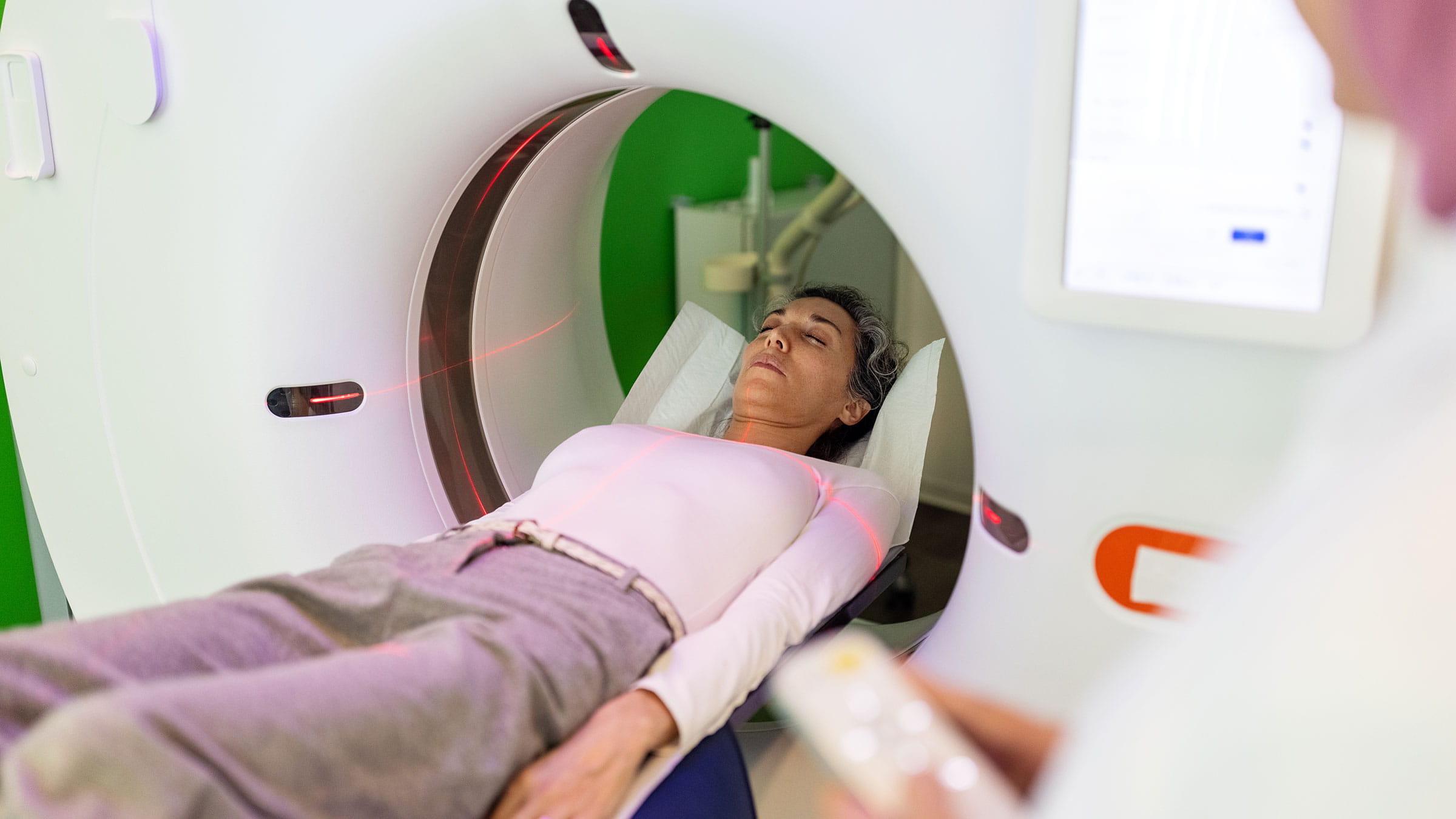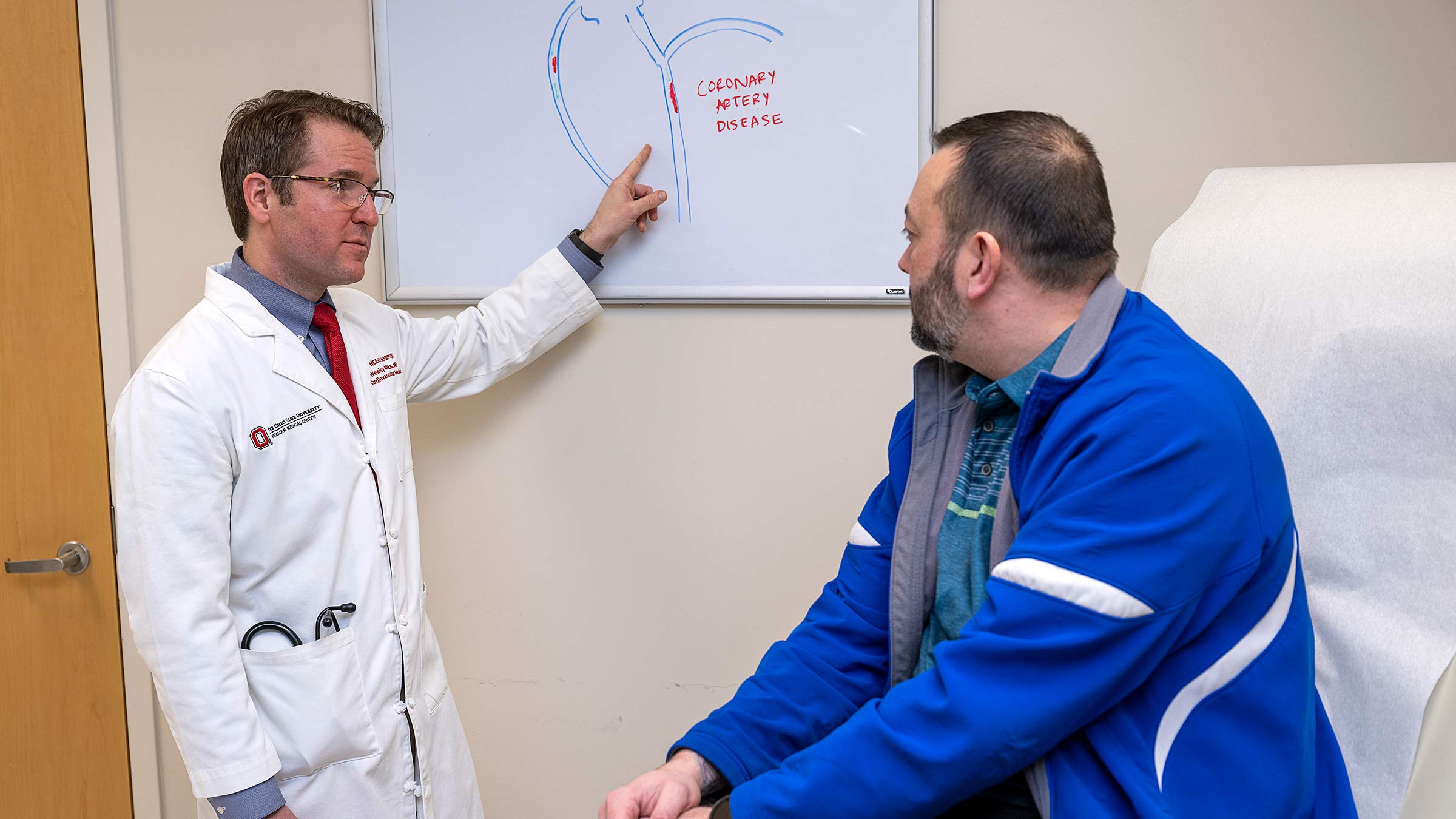
Lori Welsh’s care team would later confirm she’d survived a “widowmaker” heart attack, with a 90% blockage in her artery.
She was 47 when she felt an unusual bubbly feeling in her chest while driving to work. By the time she experienced sudden chest pressure and numbness in her hands, she knew it was time to seek emergency medical care.
Welsh was aware that her family had a history of heart attacks, and multiple family members had died relatively young. Her mother had even experienced a heart attack at about the same age.
“When you sit in front of a genealogical chart and you're looking at five generations of heart attack and stroke and death in their 50s, it kind of pops out at you,” Welsh says.
She knew her individual risks, too — at 22, a blood test confirmed high levels of lipoprotein(a), a unique form of poor cholesterol that causes plaque build-up and clotting in the arteries. It can lead to an increased risk of heart attack and stroke.
The test that revealed the family’s heart attack risk
The lipoprotein(a) blood test that Welsh received isn’t routinely performed in a standard lipid profile (the routine blood test you’d get to determine your cholesterol levels). But the U.S. Centers for Disease Control and Prevention (CDC) recommends lipoprotein(a) testing for people who have certain risk factors, including:
- Peripheral arterial disease
- Heart attack, stroke or coronary disease before a certain age
- Family members who had heart attacks or strokes before a certain age
- Inherited high cholesterol, also known as familial hypercholesterolemia
- Certain kinds of aortic stenosis
Welsh says this kind of testing helped her family “connect the dots” of their genetic health factors.
Because she was aware of her risk factors, Welsh had been determined to manage her diagnosis with a healthy diet and plenty of exercise, but diet and exercise alone often isn’t enough to reduce heart attack risk in people with high lipoprotein(a) levels. That’s why scientists are developing therapies for lowering those lipoprotein(a) levels, and why Welsh herself joined a clinical trial at The Ohio State University Wexner Medical Center studying these new treatments.
How additional heart testing can help prevent cardiac events and cardiovascular conditions
Some heart health screenings that aren’t routinely given can actually provide even more insight into a patient’s individualized risk for cardiac conditions. Especially when combined with other potential risk factors like older age, high blood pressure or lack of healthy diet and exercise, each person’s individual diagnosis can help them work with their health care providers to determine the best plans for treatment and prevention moving forward.
“Testing for lipoprotein(a) levels may not be assessed on a standard lipid profile, but it only requires an extra order for a blood test that can be drawn at the same time as routine lipid testing, during a regular cholesterol profile,” says Wesley Milks, MD, a preventive cardiologist and lipid specialist.
“It’s an under-utilized test. And for select people who may be on the cusp of other interventions like statin therapy, a different dietary pattern, extra physical activity or other measures, testing for heightened lipoprotein(a) levels can help influence them to take more intensive preventive approaches to their health.”

Other preventive heart tests to know about
Heart disease is the leading cause of death among people of most racial and ethnic groups in the United States. While lifestyle choices like diet and exercise can lower the risks for some, some lesser-known heart screenings can help people measure their risk for cardiac conditions like Welsh’s, detecting issues earlier on and leading to preventive treatments that can save lives.
Screenings to help detect aortic aneurysms before they rupture
An aneurysm is an enlargement of the body’s largest blood vessel, the aorta. This most often occurs in the abdomen but can also form in the chest. If left untreated, the aneurysm can rupture leading to life-threatening internal bleeding.
To screen for an aortic aneurysm, doctors use an echocardiogram, ultrasound or cross-sectional imaging with a CT scan or MRI. These tests can both diagnose an aortic aneurysm and give helpful information on treatment options before a rupture occurs. Screening is especially important if someone has a family history of aneurysms or other risk factors, such as smoking or high blood pressure.
“Thoracic aortic aneurysms are even more silent than abdominal aneurysms. They rarely cause symptoms until they rupture and are typically found incidentally on either echo or CT scan,” says Kristine Orion, MD, an Ohio State vascular surgeon and a clinical associate professor of surgery at the Ohio State College of Medicine.
“If you have risk factors for aneurysms (family history of aneurysm, smoking or age 65 or older), I recommend you ask your doctor about screening,” Dr. Orion says.
Generally screening for an abdominal aneurysm can be done with a simple ultrasound. Unfortunately, ultrasound is limited when it comes to seeing the entire thoracic aorta, so in addition to an echocardiogram, a CT scan is typically used to check for a thoracic aneurysm. MRI is rarely used to screen specifically for an aneurysm because of its cost and the time it takes to perform. However, if you have undergone an MRI of your spine, the aorta is adjacent to it and can be evaluated by a radiologist.
"If you are found to have an aortic aneurysm, whether thoracic or abdominal, you should be seen in consultation by a vascular surgeons,” Dr. Orion says. “Even if you do not need surgery, your vascular surgeon will be happy to perform yearly or bi-yearly surveillance with either ultrasound or CT scan.”
Coronary calcium CT scans provide a clearer picture of arteries
Another lesser-known preventive heart screening is a coronary CT calcium scan. This test helps doctors detect calcium deposits in the heart’s arteries, which indicates the presence of atherosclerosis (hardening of the arteries), the key process that leads to coronary artery disease, including heart attack, most forms of stroke and peripheral artery disease. A coronary calcium CT scan is especially useful in helping providers diagnose patients who have high risk factors for the condition but aren’t showing symptoms.
“The coronary CT calcium scan is unique because it’s an imaging study,” Dr. Milks says. “It involves a small dose of radiation — about the same amount as two mammograms — and it evaluates the area around the heart to detect calcified material. Many folks in their 40s or 50s should not have any detectable calcification, so if a patient has even a small amount earlier in life, it could indicate an abnormal or premature formation of plaque.
“Knowing this, we can determine an individualized prevention plan to try to lower the risk of heart attack, stroke and other vascular diseases.”
How preventive tests make a difference for heart health outcomes
For Welsh, preventive heart screenings like the lipoprotein(a) testing she received helped give her a more accurate picture of her family’s history and risk factors for cardiac events.
Now, after her heart attack, she encourages people to learn more about their own risk factors and the lesser-known screenings that are available to give them a clearer picture of their heart health.
“There’s nothing more important than your health,” she says. “With lipoprotein(a), it’s a non-invasive blood test that can check off a box that doesn’t normally get checked. And if you find out you have higher levels, it can help answer questions for some families like mine.”

Your heart is in the right place
Learn more about advances in care and treatment for patients at The Ohio State University Heart and Vascular Center
Expert care starts here



